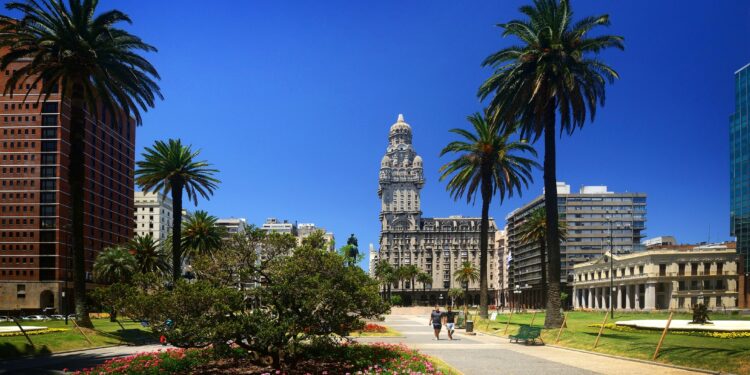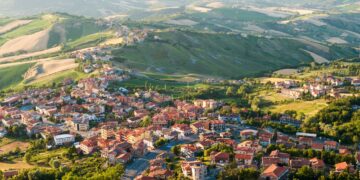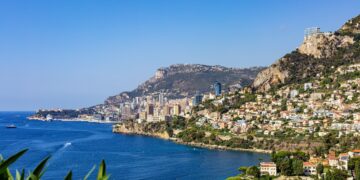Uruguay, a small yet enchanting country, has been the backdrop for numerous films, TV shows, and books. Let’s embark on a cinematic journey, exploring the best of Uruguay’s cultural landscape.
The Magic of the Silver Screen: 10 Famous Films Shot in Uruguay
Uruguay’s rich culture and picturesque landscapes have served as a vivid canvas for a variety of films. Here are 10 famous films shot in Uruguay that beautifully encapsulate its essence:
- “A Twelve-Year Night” (2018) – This gripping film, chronicling the harrowing ordeal of three political prisoners, showcases the somber side of Uruguay’s political history.
- “Whisky” (2004) – A drama-comedy film that uses the mundane life in Montevideo to narrate an emotionally charged story of loneliness and pretense.
- “Gigante” (2009) – This film uses the backdrop of a supermarket in Montevideo to weave a fascinating tale of love and obsession.
- “The Silent House” (2010) – A horror film shot in real-time, using the eerie landscapes of rural Uruguay to create an atmosphere of terror.
- “Bad Day to Go Fishing” (2009) – This dark comedy-drama, set in a small Uruguayan town, tells a captivating tale of a wrestling match gone wrong.
- “Miami Vice” (2006) – Though primarily set in Miami, this action film features several scenes shot in Montevideo and Punta del Este.
- “The Pope’s Toilet” (2007) – Set on the Brazil-Uruguay border, this film provides a glimpse into the rural life of Uruguay.
- “The Moneychanger” (2019) – This crime drama, set in Montevideo, tells the story of a man who becomes a currency exchange broker to survive in a corrupt system.
- “Rambleras” (2013) – A light-hearted drama that showcases the street life of Montevideo through the lives of three women.
- “Mr. Kaplan” (2014) – This dark comedy, set in Montevideo, tells the story of an elderly Jewish man who believes he has found a Nazi war criminal.
These films not only offer a cinematic journey through Uruguay but also highlight the country’s cultural diversity and its unique contributions to global cinema.
Immersive Narratives: 5 TV Shows Set in Uruguay
Uruguay’s charm has also been captured in several television series, offering a small-screen exploration of the country’s culture and life. Here are five TV shows set in Uruguay:
- “El Hipnotizador” (2015-2017) – This HBO Latin America original series, partly filmed in Montevideo, explores the world of hypnotism and revenge.
- “Celia” (2015-2016) – A bio-series about the life of famous salsa singer Celia Cruz, including scenes shot in Montevideo.
- “Four Seasons in Havana” (2016) – Although primarily set in Cuba, some scenes of this detective series were shot in Montevideo, doubling for 1990s Havana.
- “La Chica Que Limpia” (2018-present) – This crime drama series, filmed in Montevideo, follows the story of a single mother who gets involved in a murder case while working as a cleaner.
- “Invisible Heroes” (2019-present) – Although primarily set in Chile, several scenes of this political drama were filmed in Montevideo.
Through these TV series, viewers can delve into different aspects of Uruguay’s culture, history, and contemporary life.
A Visual Treat for Kids: 5 Animated Films Set in Uruguay
Uruguay’s appeal is not limited to adult-oriented films and TV shows. It has also been a source of inspiration for several animated movies that transport viewers to its vibrant landscapes. Here are five animated films set in Uruguay:
- “Anina” (2013) – This film tells the story of a girl who embarks on a journey of self-discovery after a schoolyard fight.
- “Selkirk, the Real Robinson Crusoe” (2012) – This film, set in the early 18th century, is based on the real-life story of a sailor who survived on a deserted island, thought to be off the coast of Uruguay.
- “Patoruzito” (2004) – Although an Argentine production, this film features several scenes set in Uruguay, showcasing the shared cultural heritage of the two countries.
- “Un día de campo” (2012) – This short film offers a delightful portrayal of a family’s day out in the Uruguayan countryside.
- “El íºltimo mago O Bilembambudín” (2015) – Set in a fantastical universe, this film tells the story of a young boy who must save his kingdom, drawing inspiration from Uruguay’s landscapes.
These animated films not only entertain but also educate young viewers about Uruguay’s rich culture and history.
From Pages to Reality: Famous Books Set in Uruguay
Uruguay’s multifaceted persona has also been beautifully captured in literature. Here are some classic and contemporary books set in Uruguay that transport readers to its enchanting landscapes:
Classic:
- “The Shipyard” by Juan Carlos Onetti – This novel offers a bleak yet captivating depiction of a man’s futile efforts to revive a shipyard in a decaying Uruguayan town.
- “The Invisible Mountain” by Carolina De Robertis – A sweeping family saga set against the tumultuous history of Uruguay throughout the 20th century.
- “Body Snatcher” by Juan Carlos Onetti – This novel explores the grim reality of life in a small Uruguayan town through the eyes of a failed medical student.
Contemporary:
- “Out of the Dark” by Luis Níºñez – This novel, set during Uruguay’s military dictatorship, tells the story of a young boy’s fight for survival and freedom.
- “The Lighthouse” by Paco Love – This contemporary novel offers a vivid depiction of life in a small fishing village on Uruguay’s coast.
- “Little Red Drops” by Sofía Echegaray – This book paints a poignant picture of Uruguay’s political landscape through the story of a woman’s search for her missing brother.
Whether you prefer historical sagas or contemporary narratives, these books offer an insightful exploration of Uruguay’s cultural and historical landscape.
Film-Tourism: Exploring Uruguay’s Filming Locations
Uruguay, with its distinct landmarks and stunning landscapes, offers a plethora of locations for filmmakers and film-tourists alike. Here are some must-visit locations in Uruguay:
- Montevideo – The capital city of Uruguay, featured in numerous films and TV shows, offers a blend of historical charm and modernity.
- Punta del Este – Known as the “Monaco of the South,” this glamorous seaside resort has been featured in films like “Miami Vice.”
- Colonia del Sacramento – This UNESCO World Heritage Site, with its cobbled streets and colonial-era buildings, offers a glimpse into Uruguay’s past.
- Cabo Polonio – This remote seaside village, with its iconic lighthouse, is a hidden gem that has served as a backdrop for several films.
- Casapueblo – This unique, sculpture-like building, built by artist Carlos Páez Vilaró, offers stunning views of the Atlantic Ocean and has been featured in several travel shows.
A visit to these locations offers a unique blend of film-related sightseeing, allowing you to engage with Uruguay’s cinematic heritage while experiencing its cultural attractions.
Where to Stay in Uruguay: From Budget to Luxury
Uruguay offers a diverse range of accommodations to cater to all types of travelers. Here are some options to consider:
Luxury:
- Estancia Vik José Ignacio – This luxurious ranch-style hotel offers a unique blend of rustic charm and modern comforts.
- The Grand Hotel Punta del Este – This five-star hotel offers panoramic sea views and top-notch amenities.
- Sofitel Montevideo Casino Carrasco and Spa – This historic hotel offers a taste of Uruguay’s glamorous past.
Budget:
- Che Lagarto Hostel Montevideo – This budget-friendly hostel offers comfortable accommodations in the heart of Montevideo.
- El Viajero Downtown Hostel and Suites – This hostel, located in the historic city of Colonia del Sacramento, offers budget-friendly rooms and a friendly atmosphere.
- Tas D’ Viaje Hostel – Located in Punta del Este, this hostel offers affordable accommodations and a lively social atmosphere.
Regardless of your budget, Uruguay offers a variety of accommodations to meet your travel needs.
A Gastronomic Journey: Where to Eat in Uruguay
Uruguay offers a rich culinary scene, from casual beachside grills to gourmet restaurants. Here are some places to enjoy the flavors of Uruguay:
Budget:
- Mercado del Puerto, Montevideo – This bustling market offers a variety of eateries serving traditional Uruguayan dishes.
- La Pasiva – Known for its hot dogs and chivitos (Uruguayan sandwiches), this chain offers affordable and tasty food.
- La Molienda – This café in Punta del Este offers delicious breakfast and lunch options at reasonable prices.
Luxury:
- Bodega Garzón – Located in a vineyard near Punta del Este, this restaurant offers gourmet cuisine paired with exquisite wines.
- Francis – This upscale restaurant in Montevideo is known for its extensive wine list and delicious Uruguayan dishes.
- La Bourgogne – Located in Punta del Este, this French restaurant offers a luxurious dining experience.
Whether you’re a budget traveler or a gourmet enthusiast, Uruguay’s culinary scene has something to offer everyone.
Unleashing the Adventurer: A Detailed Itinerary
If you’re planning to explore Uruguay’s cinematic heritage, here’s a five-day itinerary to help you make the most of your visit:
Day 1: Montevideo
Begin your journey in Montevideo, exploring its historic buildings and vibrant street life featured in films like “Whisky” and “Gigante.”
Day 2: Montevideo – Punta del Este
Head to Punta del Este, featured in films like “Miami Vice,” and explore its glamorous beaches and vibrant nightlife.
Day 3: Punta del Este – Colonia del Sacramento
Travel to Colonia del Sacramento, a UNESCO World Heritage Site, and explore its historic streets featured in several films and TV shows.
Day 4: Colonia del Sacramento – Cabo Polonio
Head to Cabo Polonio, a remote seaside village, and experience the tranquility that has inspired several filmmakers.
Day 5: Cabo Polonio – Montevideo
Return to Montevideo and visit Casapueblo, a unique building featured in several travel shows, before concluding your journey.
This itinerary offers a balanced mix of city life, beach relaxation, and historical exploration, allowing you to experience the best of Uruguay’s cinematic landscapes.
The Mystique of Uruguay: Cryptid Legends and Curiosities
Uruguay has its fair share of mysteries and legends that add an intriguing layer to its cultural tapestry. One of the most famous legends is that of “La Luz Mala” (The Bad Light), a phenomenon believed to be the souls of the dead, which has inspired several local films and stories. Another interesting cryptid is the “Lobizón,” a werewolf-like creature believed to roam the countryside. These intriguing tales add a dash of mystery to Uruguay’s cinematic allure.
Beyond the Beaten Path: Hidden Gems in Uruguay
While Uruguay’s popular landmarks are frequently featured in films, there’s more to explore if you venture off the beaten path. Here are a few hidden gems:
- Valizas – This bohemian seaside village, with its sand dunes and laid-back lifestyle, offers a unique setting away from the tourist crowds.
- Cerro Arequita – This natural reserve, with its intriguing cave formations, offers a fascinating setting for adventure films.
- Pueblo Garzón – This tiny village, with its charming streets and world-class wineries, is a hidden gem waiting to be discovered.
These locations offer unique experiences, making them worthwhile additions to your cinematic journey through Uruguay.
Travel Essentials: What to Pack for a Trip to Uruguay
When packing for a film-themed trip to Uruguay, consider these essentials:
- Comfortable Footwear – For exploring Uruguay’s diverse landscapes.
- Versatile Clothing – Include layers to accommodate Uruguay’s changing weather.
- Rain Gear – To prepare for unexpected rain showers.
- Camera – To capture your cinematic memories.
- Travel Guide and Map – To help you navigate and discover filming locations.
With these essentials, you’ll be well-prepared for your cinematic adventure in Uruguay.
Navigating Uruguay: Transportation Tips
Getting around Uruguay is relatively easy, thanks to its well-developed transportation network. Here are some tips:
- Buses – The most common form of public transportation, connecting major cities and towns.
- Car Rental – A good option if you’re planning to explore off-the-beaten-path locations.
- Bikes – Many cities, like Montevideo, offer bike rental services, allowing you to explore at your own pace.
- Ferries – A convenient way to travel between Buenos Aires and cities like Colonia del Sacramento and Montevideo.
These transportation options offer flexibility and convenience, allowing you to explore Uruguay’s cinematic landscapes with ease.
Travel Documentation: Essentials for Visiting Uruguay
Before embarking on your journey to Uruguay, ensure you have the necessary travel documents:
- Passport – Valid for at least six months beyond your planned departure date.
- Visa – Depending on your nationality, you may need a visa. Check the Uruguay Embassy or Consulate website in your country for requirements.
- Travel Insurance – Recommended for covering potential medical expenses or trip cancellations.
- International Driving Permit – If you plan to rent a car, an IDP may be required along with your driver’s license.
Ensuring you have the correct documentation will facilitate a smooth cinematic journey through Uruguay.
Conclusion: Unveiling Uruguay’s Cinematic Landscape
From the vibrant streets of Montevideo to the tranquil beaches of Cabo Polonio, Uruguay offers a unique cinematic journey. Whether you’re a film enthusiast, a book lover, or a traveler seeking unique experiences, this guide provides a comprehensive overview of Uruguay’s cinematic landscape. Embark on a journey through Uruguay’s famous films, TV shows, and books, and discover the hidden gems that make this country a filmmaker’s dream. ¡Buen viaje!













